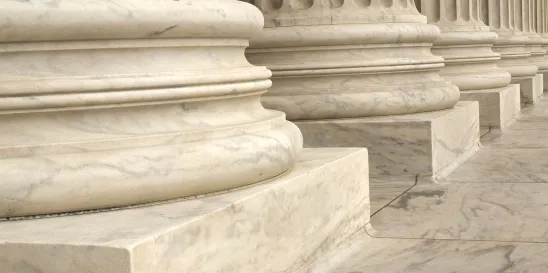Under the “discovery rule,” a copyright claim may be timely brought within three years of when the plaintiff knew or reasonably should have known about the infringement. However, for claims brought under the discovery rule, it remains uncertain whether recoverable damages are limited to a three-year lookback period.
Factual Background
In the 1980s, Sherman Nealy and Tony Butler formed Music Specialist, Inc., through which they created and copyrighted several musical recordings. Between 1989 and 2016, Nealy served two separate prison sentences. While Nealy was incarcerated, Butler formed his own music company and, without Nealy’s permission, licensed Music Specialist’s copyrighted musical portfolio to Warner Chappell Music, Inc. and Artist Publishing Group. One of the copyrighted works was interpolated (incorporated with minimal alteration) into Flo Rida's 2008 hit song “In the Ayer.” In 2018, Nealy filed a copyright infringement action against Warner Chappell Music and Artist Publishing Group.
Case History and Legal Arguments
Although the Copyright Act has a three-year statute of limitations, Nealy argued he was still entitled to damages under the “discovery rule” because he did not learn about the alleged infringement until he was released from prison. The defendants primarily argued that even if Nealy’s action was timely, he could not recover damages for any infringement that occurred more than three years before his 2018 lawsuit. The defendants relied upon a 2014 Supreme Court decision, Petrella v. Metro-Goldwyn-Mayer, Inc., in which the Court, refusing to apply the equitable doctrine of laches to copyright claims, stated that the Copyright Act “bars relief of any kind for conduct occurring prior to the three-year limitations period.”
Circuit courts have split over the meaning of Petrella. For example, the Second Circuit held that under Petrella, a copyright plaintiff, timely asserting claims under the “discovery rule,” may not recover for infringement occurring more than three years before the plaintiff filed suit. Conversely, the Eleventh Circuitheld that when copyright claims accrue under the “discovery rule,” infringing actions are considered a singular claim, and a plaintiff may recover damages from the start of the infringement, regardless of how long ago it occurred.
At the upcoming oral argument and in its review of the underlying case, the Supreme Court will review the following question: “Whether, under the discovery accrual rule applied by the circuit courts and the Copyright Act's statute of limitations for civil actions, 17 U. S. C. § 507(b), a copyright plaintiff can recover damages for acts that allegedly occurred more than three years before the filing of a lawsuit.”
Potential Industry Impact
Organizations such as the US Chamber of Commerce and the Electronic Frontier Foundation have argued that allowing damages to be recovered for harm incurred more than three years prior to the filing of an infringement claim will be harmful to businesses and encourage “copyright trolling.” The American Intellectual Property Law Association, by contrast, contends that eliminating the “discovery rule” and limiting damages for infringement claims “would place individual artists and small businesses, who may lack the resources to engage in continuous monitoring, at an unfair disadvantage.”
While the Recording Industry Association of America has argued in favor of the defendants, it also has cautioned that, due to advances in technology, including generative artificial intelligence, there should still be a means to pursue damages in the rare instances when infringement is intentionally concealed or otherwise “undetectable as a practical matter within three years of the infringing act.”
Ultimately, if the Supreme Court affirms the availability of copyright holders to obtain retrospective relief beyond a three-year lookback period, the manner in which it crafts such a rule could have a broad impact on the entertainment industry, among others.





 />i
/>i

